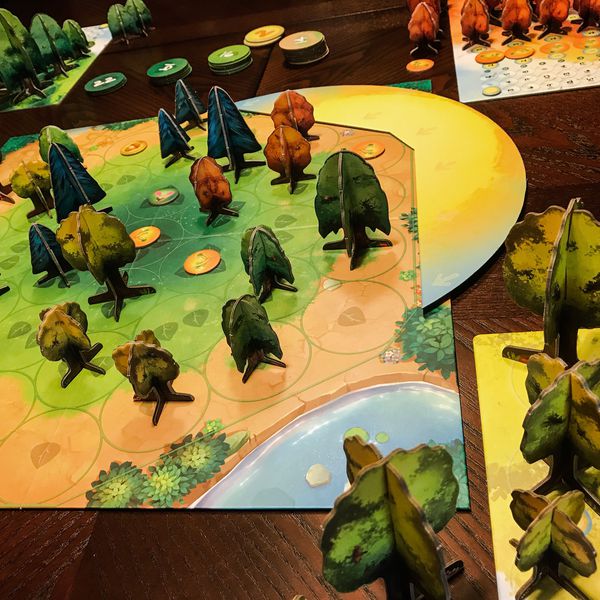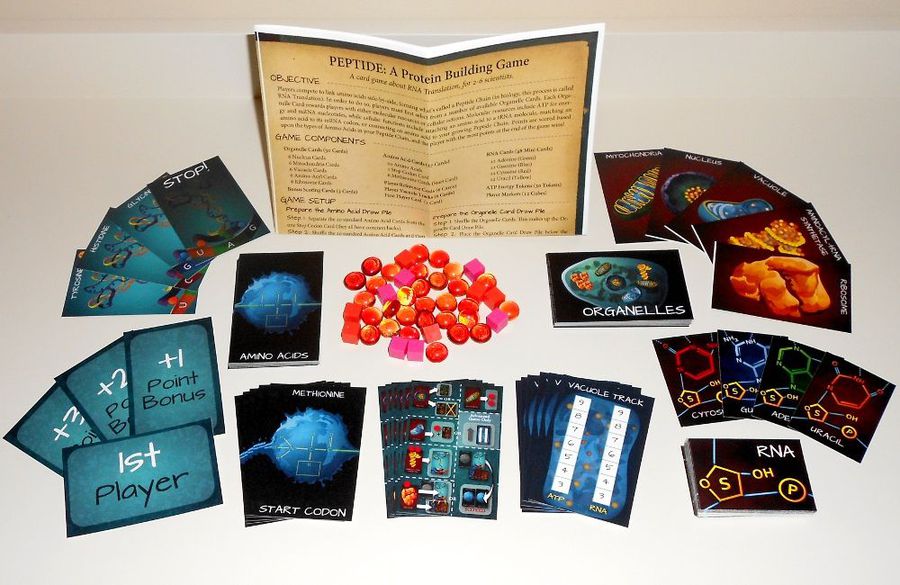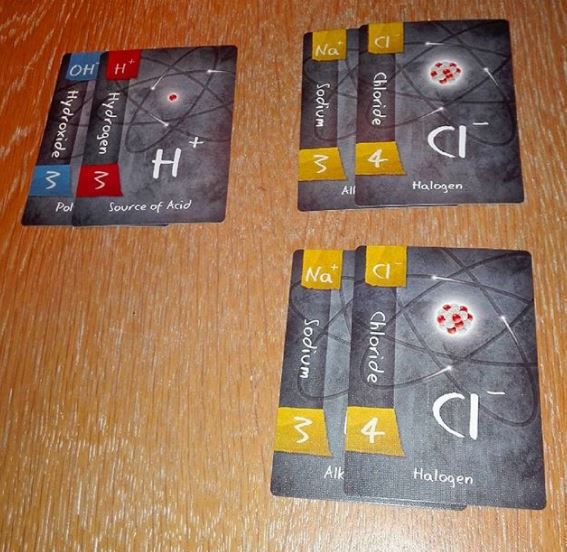
Hello educators and friends of Spielbound!
I am pleased to be returning to my role as Education Coordinator for Spielbound after a short sabbatical! One the goals of this blog is to continue to share my passion for the interaction between games-based learning and curriculum design. I teach science at a high school in the Omaha Metro Area and have incorporated standards-based, games-based learning into several of my content sections for my physical science course. If you are a teacher in the audience and would like to discuss gamification, games-based learning, or curriculum design, you can contact me at [email protected]. Part of my role is to help area teachers reflect on game options for their classroom.
My goal for this blog is to kick off the coming school year with some science options for classrooms. The three games that I’m going to feature here are interesting in that they will really ask us to confront the purpose as to why we bring games to a classroom. I’ve found that it can be easy for teachers to fool themselves into thinking that a game will “teach for them.” It is actually rare that a game will do everything that is necessary to help students understand a particular standard, but that doesn’t mean that there aren’t other benefits. We must always be aware of the goals and challenges that games present.
Let’s begin with a pair of biology-themed games that could be excellent inclusions for middle school science, and high school general biology, ecology, or Advanced Placement biology curricula.
Big Picture Biology
Photosynthesis, by Blue Orange Games, finds players harnessing one of the most critical reactions of life to grow trees, spread seeds, and grow more trees. The coolest aspect of this game is that the trees are actual free-standing cardboard models that are arranged as a three dimensional board! The third dimension is incorporated into the game with easy-to-understand rules for “blocking” light from the Sun as it moves around the board. Other players are growing trees too, and access to light can be blocked if a taller tree overshadows a smaller one that is close enough. How can you build a forest in competition with everyone else’s trees? Your own trees can influence your success or lack thereof! The game begins with the Sun shining on the play area and every player having a few trees. On a player’s turn, they decide how to spend the “light points” gained through photosynthesis to sow more tree seeds, and to grow their trees. Yes, tree models come in three “heights” that lead to not only more photosynthesis (light points), but also an increased likelihood of producing shade that limits photosynthesis of other trees.
I find Photosynthesis to be a great potential game for a classroom if a teacher carefully considers what the goal is. This game is not about directly teaching the biochemical equation for photosynthesis. One of my philosophies of mentoring as Education Coordinator is to challenge teachers (who know their curriculum best!) to think about the pros and cons of using a game at a certain point. Is this game a “beginning,” “middle,” or “end” for your section on photosynthesis? I can see an argument for each. This game could be a fun way to “set the stage” for learning the gritty details later on. Or it could be a capstone for a unit in which the learned equation is put into realistic action. I am particularly fascinated with the use of this game as a model for competition for an ecology section of a biology course.
Some Nebraska College and Career Ready Science Standards that could be aligned with this game:
- SC.7.8.4.B Develop a model to describe how food is rearranged through chemical reactions forming new molecules that support growth and/or release energy as matter moves through an organism.
- SC.HSP.7.2.A Use mathematical and/or computational representations to support explanations of factors that affect carrying capacity of ecosystems at different scales.
- SC.HS.8.3.E Use mathematical representations to support claims for the cycling of matter and flow of energy among organisms in an ecosystem. Assessment is limited to proportional reasoning to describe the cycling of matter and flow of energy.
- SC.HS.8.3.F Develop a model to illustrate the role of photosynthesis and cellular respiration in the cycling of carbon among the biosphere, atmosphere, hydrosphere, and geosphere.
- SC.HSP.10.5.B Construct an explanation based on evidence that the process of evolution primarily results from four factors: (1) the potential for a species to increase in number, (2) the heritable genetic variation of individuals in a species due to mutation and sexual reproduction, (3) competition for limited resources, and (4) the proliferation of those organisms that are better able to survive and reproduce in the environment.
That’s a lot of standards! I view them as possible connections between game and curriculum. How could Photosynthesis: The Game help a student understand any of these critical dimensions of biology? It is up to a dedicated teacher to decide what works best for them!
Molecular Biology Love
The second biology-themed game is Peptide: A Protein Building Game, by Genius Games. Peptide allows the biology student to drill down even deeper to model the underlying reactions that create proteins in cells. Cell organelle cards (nucleus, aminoacyl, mitochondria, vacuole, and ribosome) are used by players to perform a variety of cell functions. This could be generating ATP (cell energy) molecules and “RNA cards” that represent the four basic molecular bases that make up all amino acids (adenine, cytosine, guanine, and uranine). Ultimately, these bases can be assembled into amino acids that can be built for victory points in the game. The game models RNA Translation, the assembly of amino acids that form peptides (proteins).
What stands out to me about Peptide is it’s utility in targeting a wide variety of levels of learning goals. From basic cell structure and function to the action of protein generation, there is a lot of mineable territory to help students understand. There is always the risk in biology education that the amount of vocabulary can serve as a barrier to the “bigger picture.” Peptide: The Game grants the advantage of students being able to see the names of cell structures and biochemicals in action. It strikes me as a very efficient way to balance time and payoff. What do you think?
Some Nebraska College and Career Ready Science Standards that could be aligned with this game:
- SC.HS.8.3.B Construct and revise an explanation based on evidence for how carbon, hydrogen, and oxygen from sugar molecules may combine with other molecules to form the four basic macromolecules.
- SC.HS.8.3.C Use a model to illustrate that cellular respiration is a chemical process whereby the bonds of food molecules are broken and bonds in new compounds are formed resulting in a net transfer of energy.
- SC.HSP.6.1.A Construct an explanation based on evidence for how the sequence of DNA determines the structure of proteins which carry out the essential functions of life through systems of specialized cells.
For The Chemistry Teacher
Now comes the time for some love to our chemistry teachers in the audience! In what ways can we help you help students to understand the construction and uses of stable ionic compounds? Ion: A Compound Building Game, by Genius Games, is a card game that challenges players to build different classes of chemicals (alkali metal salts, acids, alkaline earth salts, etc.) using ions. Ion is a drafting card game where players select one card from an available pool of cards, pass the pool to the left, and the continue to select from available cards, building compounds along the way. The game also includes options for other types of elements
I find the game mechanic of drafting to be a nice touch because it simulates the need for ions to come close enough to each other within a solution in order to form a compound. This would be a nice point of class discussion for reaction rates and imagining what happens within solutions as ionic compounds combine and separate. Another critical aspect to the game is that players have to reason out the combination of ionic charges that result in stable compounds in order to “score” them. The number of positive charges among ions must equal negative charges. I also appreciate the inclusion of vocabulary related to periodic table groups.
Some Nebraska College and Career Ready Science Standards that could be aligned with this game:
- SC.7.3.1.A Develop models to describe the atomic composition of simple molecules. Assessment does not include valence electrons and bonding energy, discussing the ionic nature of subunits of complex structures, or a complete description of all individual atoms in a complex molecule or extended structure is not required.
- SC.HS.5.5.A Construct and revise an explanation for the outcome of a simple chemical reaction based on the outermost electron states of atoms, trends in the periodic table, and knowledge of the patterns of chemical properties.
- SC.HS.5.5.D Refine the design of a chemical system by specifying a change in conditions that would produce increased amounts of products at equilibrium.
Final Thoughts
Spielbound offers several options to help support teachers in using games in their classrooms! In addition to my support for teachers who contact me with questions and considerations, we can also obtain discounts for teachers for purchasing these games. Teachers can also check out games for a short time to use in their classes. Spielbound considers adding additional copies of games to our Library that would be used by teacher members. The goal is the same: enhancing student learning through engaging play!
Want to connect with other teachers? The Teachers Google Group is designed to encourage teachers to exchange ideas about games-based learning. You don’t have to be an expert to contribute to or learn from discussions! Email me at [email protected] with your school email address and your desire to join the Google group and I can send you an invitation!




Comments
Educational Games
Great write up! On the subject of educational games, I recently played World's Fair, 1893 and found that to have some great information. I got a kick of reading all the extra facts they included.